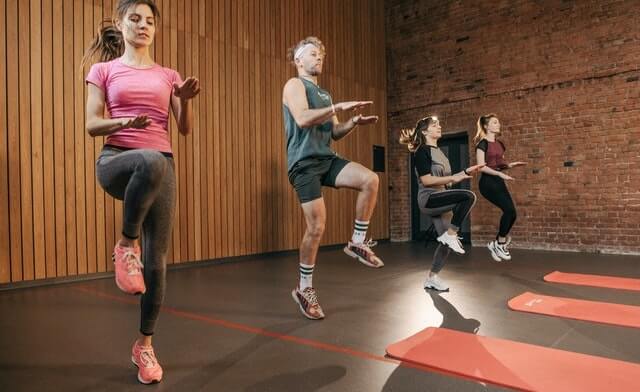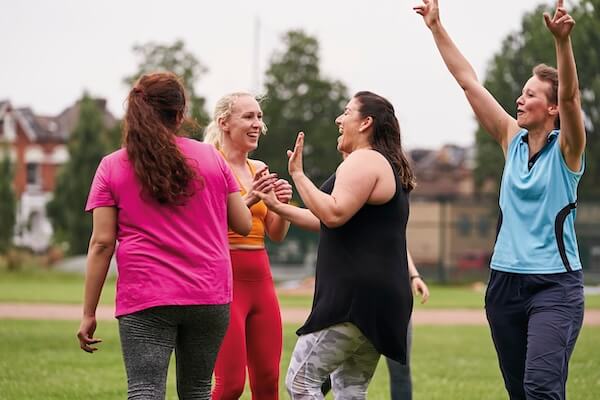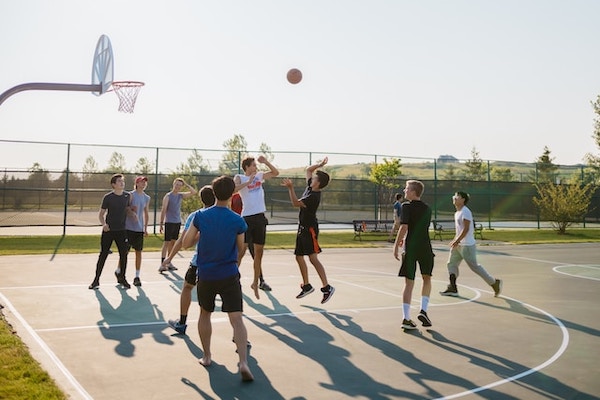
Everyone knows that exercise is good for you. It helps burn calories, build muscle, and improve your overall mood. However, not everyone knows what type of exercise they should do or the best fitness goals to tackle. Many people are stuck in a rut with their routine because they don’t know how to change things up. Below is an article on the different types of exercises available so you can choose what is right for you.
Aerobic
Aerobic exercises, also known as cardiovascular (or cardio)
exercises, are physical activities that increase the heart rate
and breathing for a sustained period of time. Examples of cardio
exercises include running,
cycling,
swimming, hiking
and brisk
walking.
Cardiovascular exercises are an important part of a healthy
lifestyle because they help to improve the health of the heart and
lungs. When you engage in cardio exercises, your heart rate and
breathing rate increase, which in turn improves the efficiency of
your cardiovascular system. This means that your heart becomes
stronger and better able to pump blood throughout your body, and
your lungs become more efficient at getting oxygen to your
muscles.
Regular cardio exercise can also help to lower your risk of heart
disease, high blood pressure, and stroke. This is because it can
help to lower your cholesterol and triglyceride levels, as well as
lower your blood pressure. Cardio exercises also play an important
role in weight loss and weight management. It can help you to burn
calories and lose weight, as well as help to maintain a healthy
weight once you've reached your goal.
In addition to the physical benefits, cardio exercises have been
shown to have positive
effects on mental health as well. It can help to reduce
stress, anxiety and improve mood.
It is generally recommended to aim for at least 150 minutes of
moderate-intensity cardio exercise or 75 minutes of
vigorous-intensity cardio exercise per week, or a combination of
both. It's also important to include 2 days of
muscle-strengthening activity per week. As you become more fit,
you may want to increase the duration and intensity of your cardio
workouts to further improve your cardiovascular fitness.
Anaerobic
Anaerobic exercise is a type of physical activity that is
performed at high intensity for short periods of time. Unlike
aerobic exercise, which primarily uses oxygen to produce energy,
anaerobic exercise relies on stored energy in the muscles to fuel
the activity. This type of exercise is typically characterized by
short bursts of intense activity, such as weightlifting,
sprinting, and high-intensity interval training (HIIT).
Anaerobic exercise is beneficial for a variety of reasons. First
and foremost, it is highly effective at building muscle and
increasing strength. This is because anaerobic exercise causes
muscle fibers to tear and then repair, leading to an increase in
muscle mass and strength. Additionally, anaerobic exercise can
also improve power, speed, and endurance, making it a popular
choice for athletes and those looking to improve their overall
physical fitness.
Another benefit of anaerobic exercise is that it can help improve
cardiovascular
health. While aerobic exercise is typically thought of as
the best way to improve heart health, anaerobic exercise has been
shown to improve blood flow, lower blood pressure, and improve
overall cardiovascular fitness.
Anaerobic exercise also has been shown to be effective for weight
loss and body composition. Because anaerobic exercise is performed
at high intensity, it can burn calories and fat at a faster rate
than aerobic exercise. Additionally, it can help increase muscle
mass, which can lead to an overall higher metabolism and increased
calorie burn throughout the day.
However, it is important to note that anaerobic exercise should be
done in conjunction with aerobic exercise for a well-rounded
fitness routine. Anaerobic exercise alone may not provide enough
cardiovascular benefits, and a combination of both types of
exercise can provide the best overall health results.
Flexibility training
Flexibility exercises, also known as stretching exercises, are a
type of physical activity that focus on increasing the range of
motion in a person's joints and muscles. These exercises are
different from aerobic and anaerobic exercises, which are both
forms of cardio-respiratory fitness.
Aerobic exercises, such as running, cycling, and swimming, are
activities that increase the heart rate and breathing rate for an
extended period of time. These exercises improve cardiovascular
fitness and endurance. On the other hand, anaerobic exercises,
such as weightlifting and sprinting, are activities that involve
short bursts of intense activity. These exercises improve muscular
strength and power.
Flexibility exercises, on the other hand, do not directly improve
cardiovascular fitness or muscular strength. Instead, they focus
on increasing the range of motion in a person's joints and
muscles. This can lead to improved posture, reduced muscle
tension, and a reduced risk of injury. Examples of flexibility
exercises include stretching, yoga, and Pilates.
Conclusion
Try getting a mix of different exercises. This can help keep things exciting but also provide a more balanced fitness that will reduce the risk of injury.






